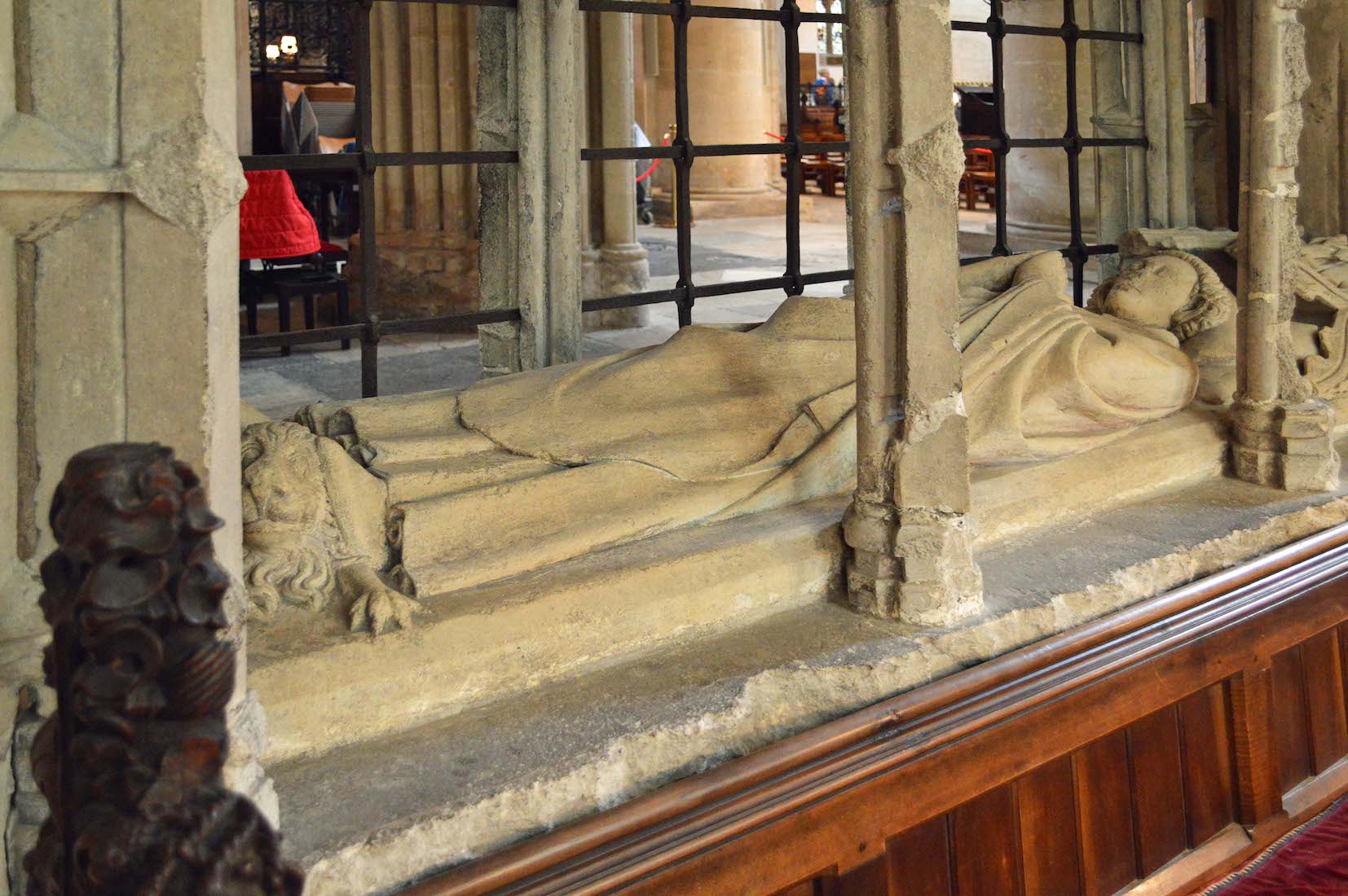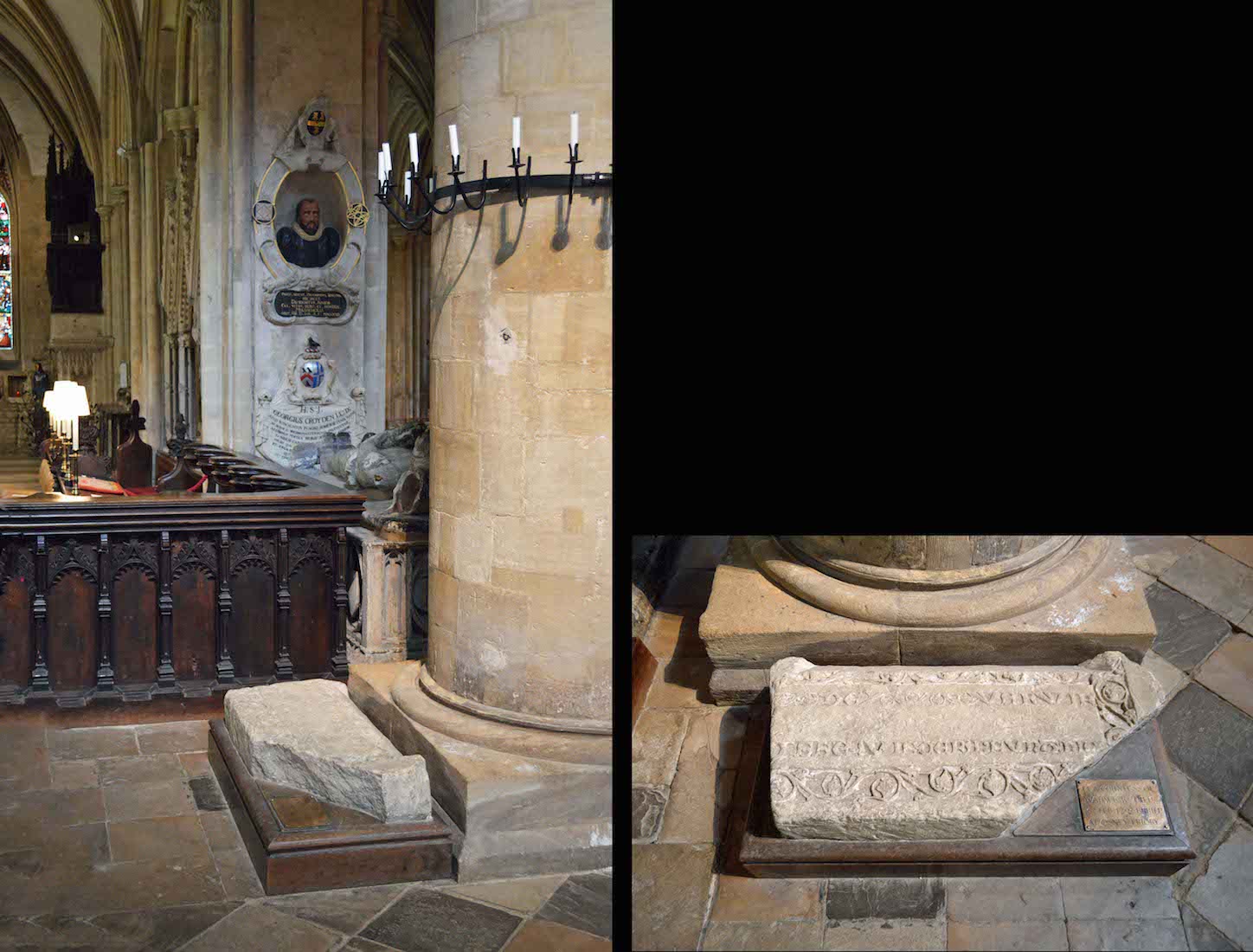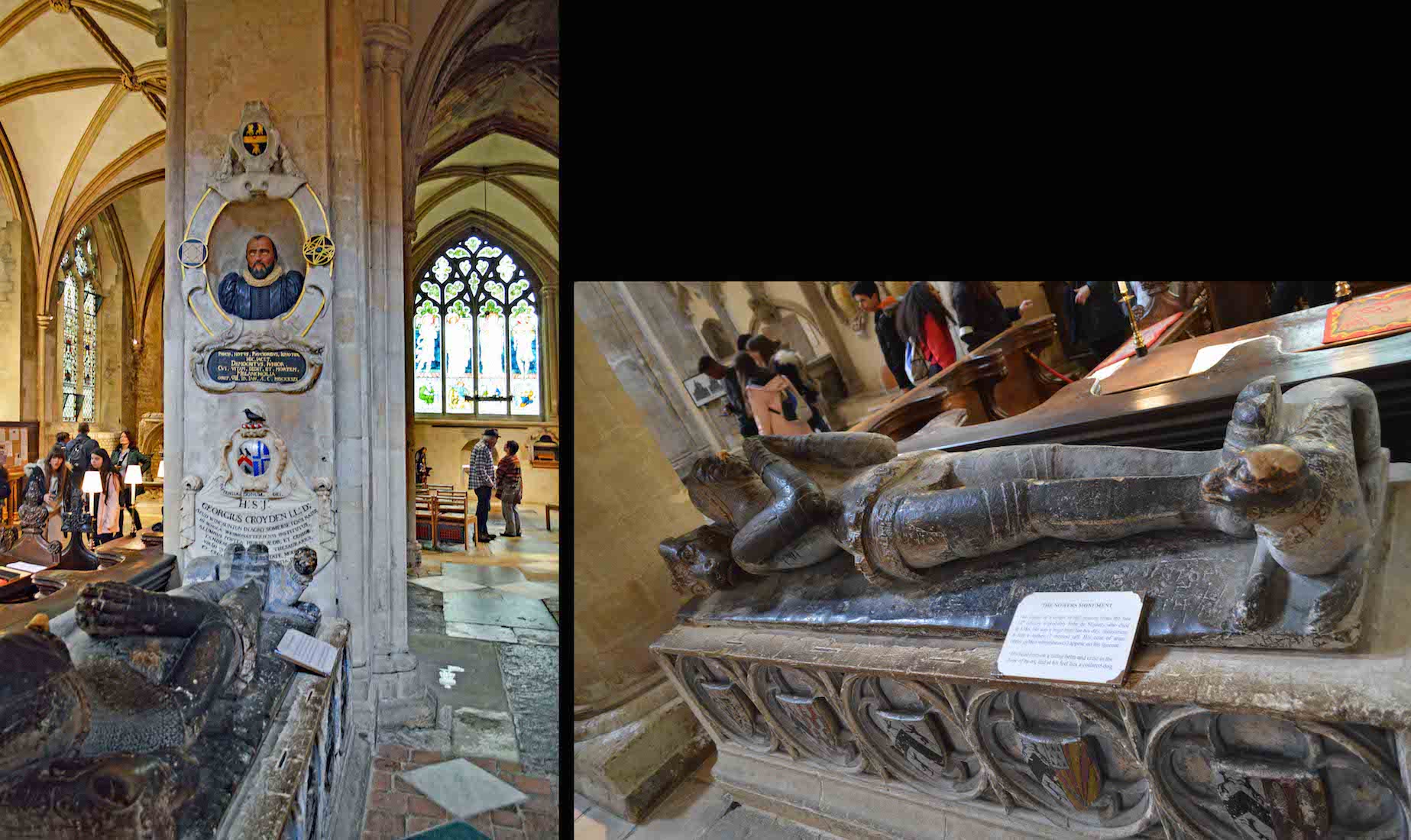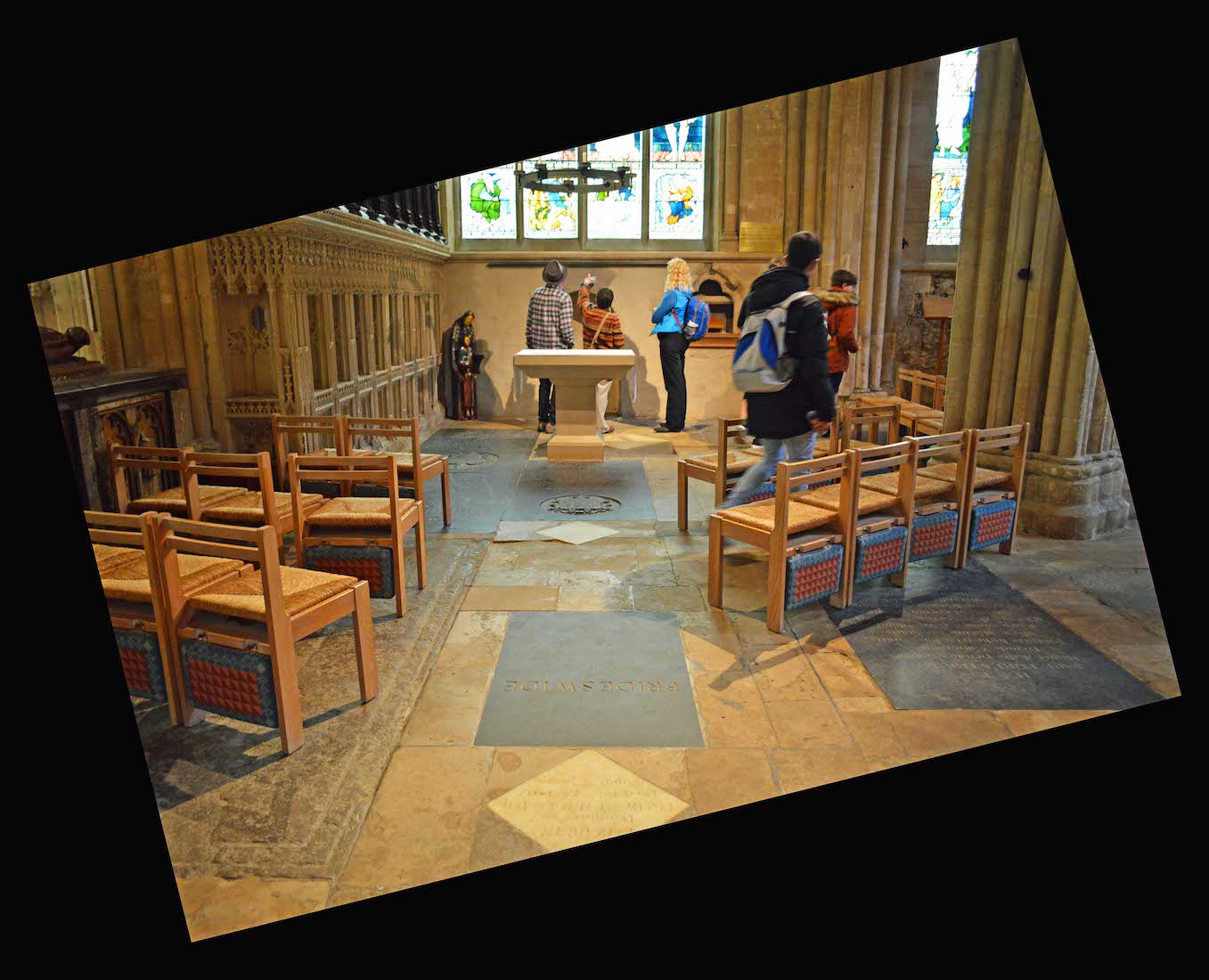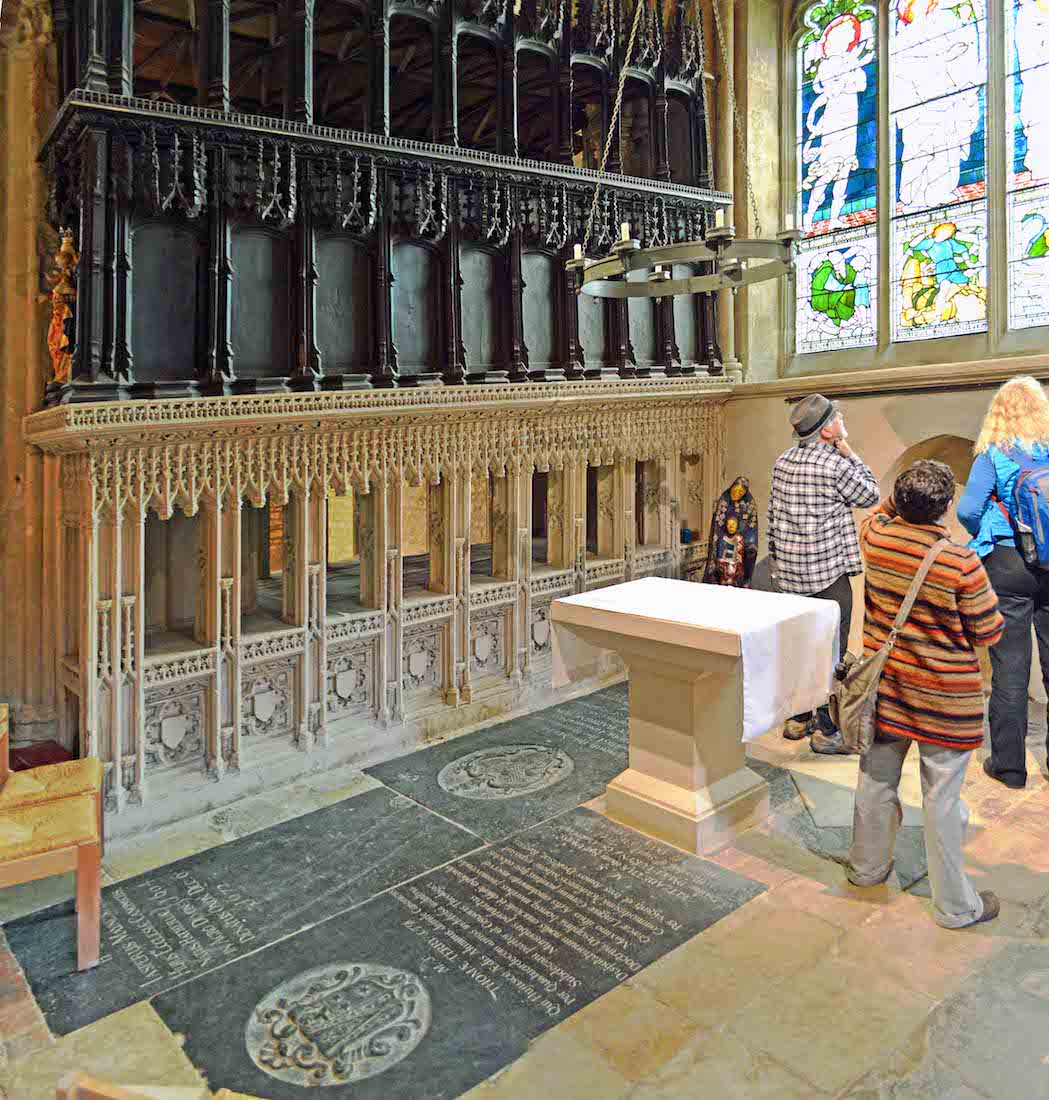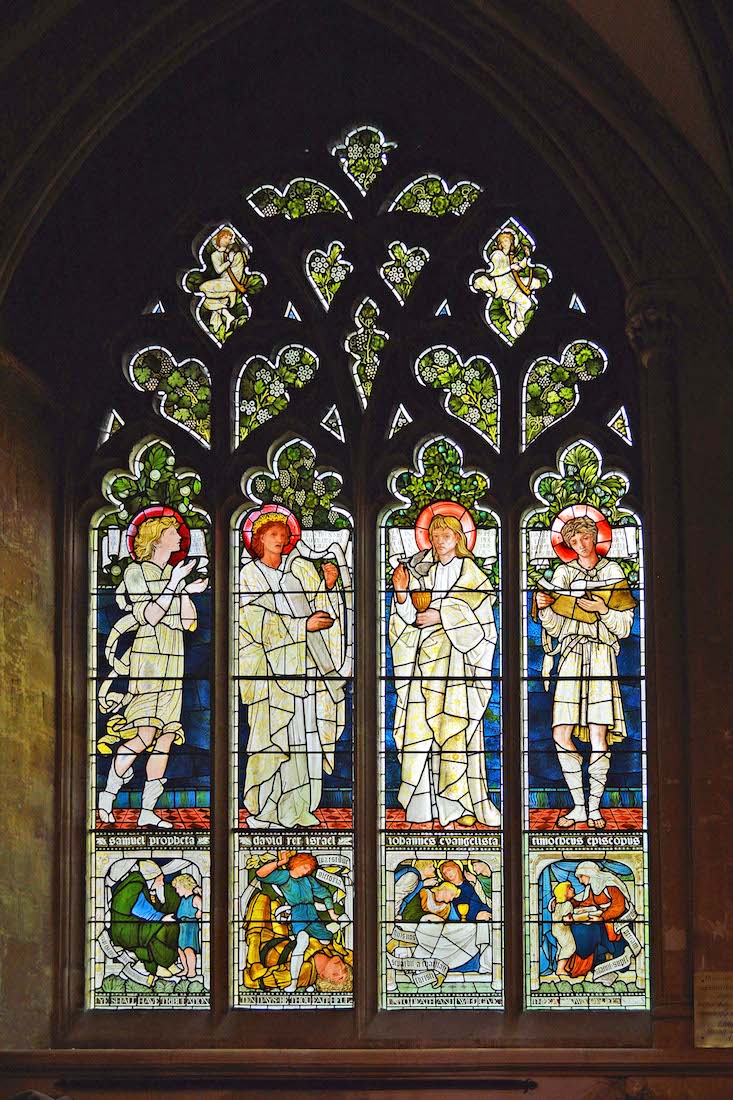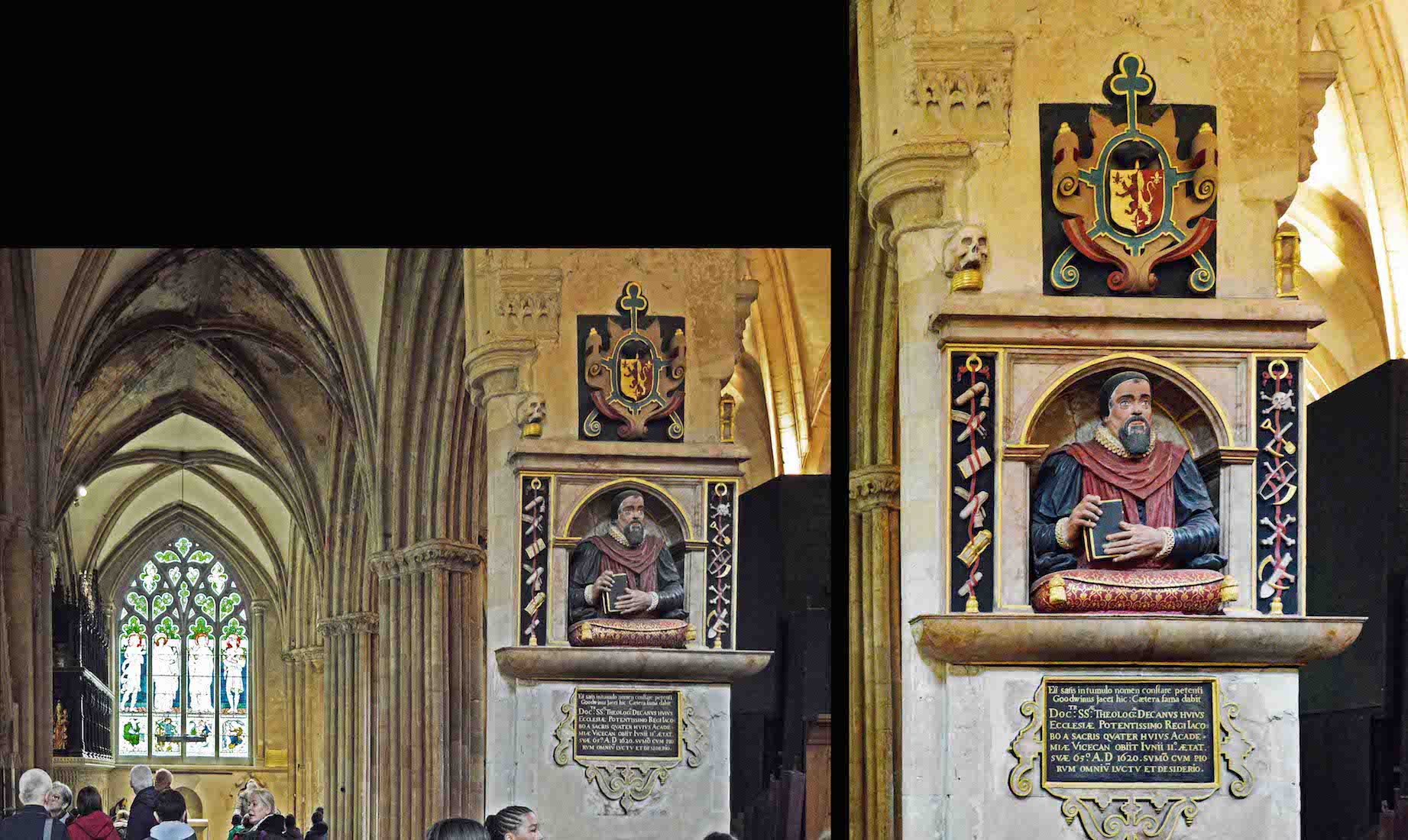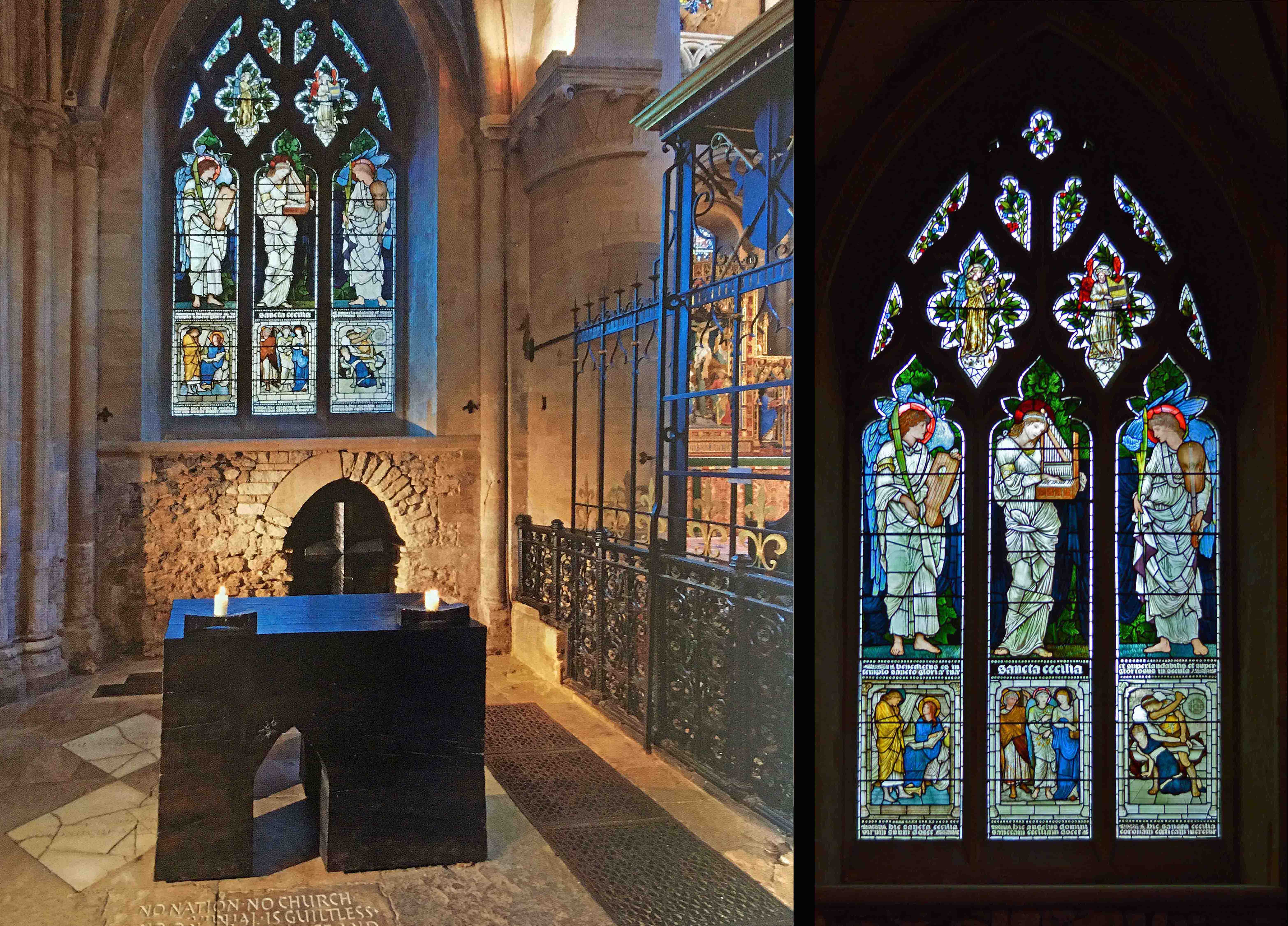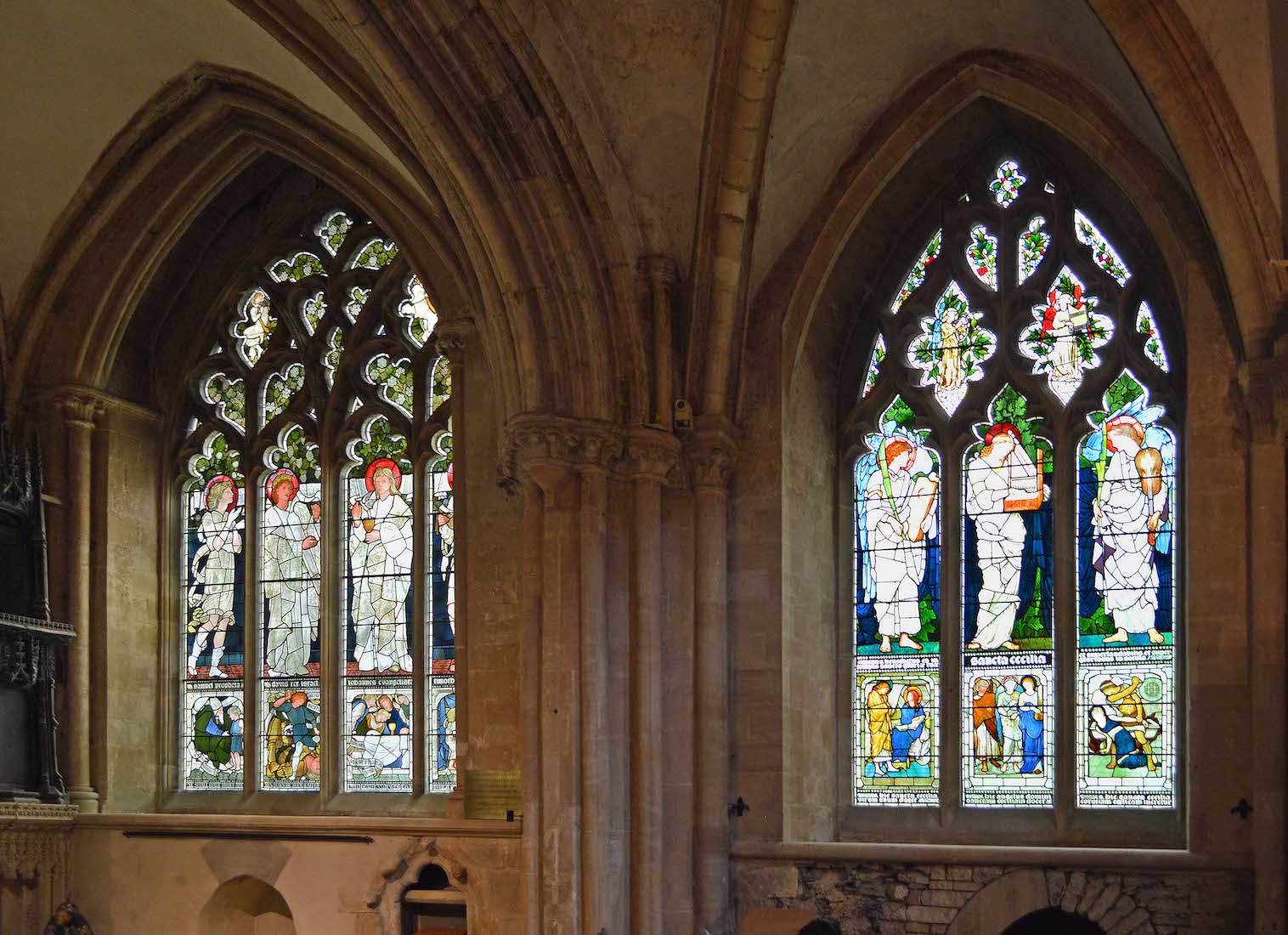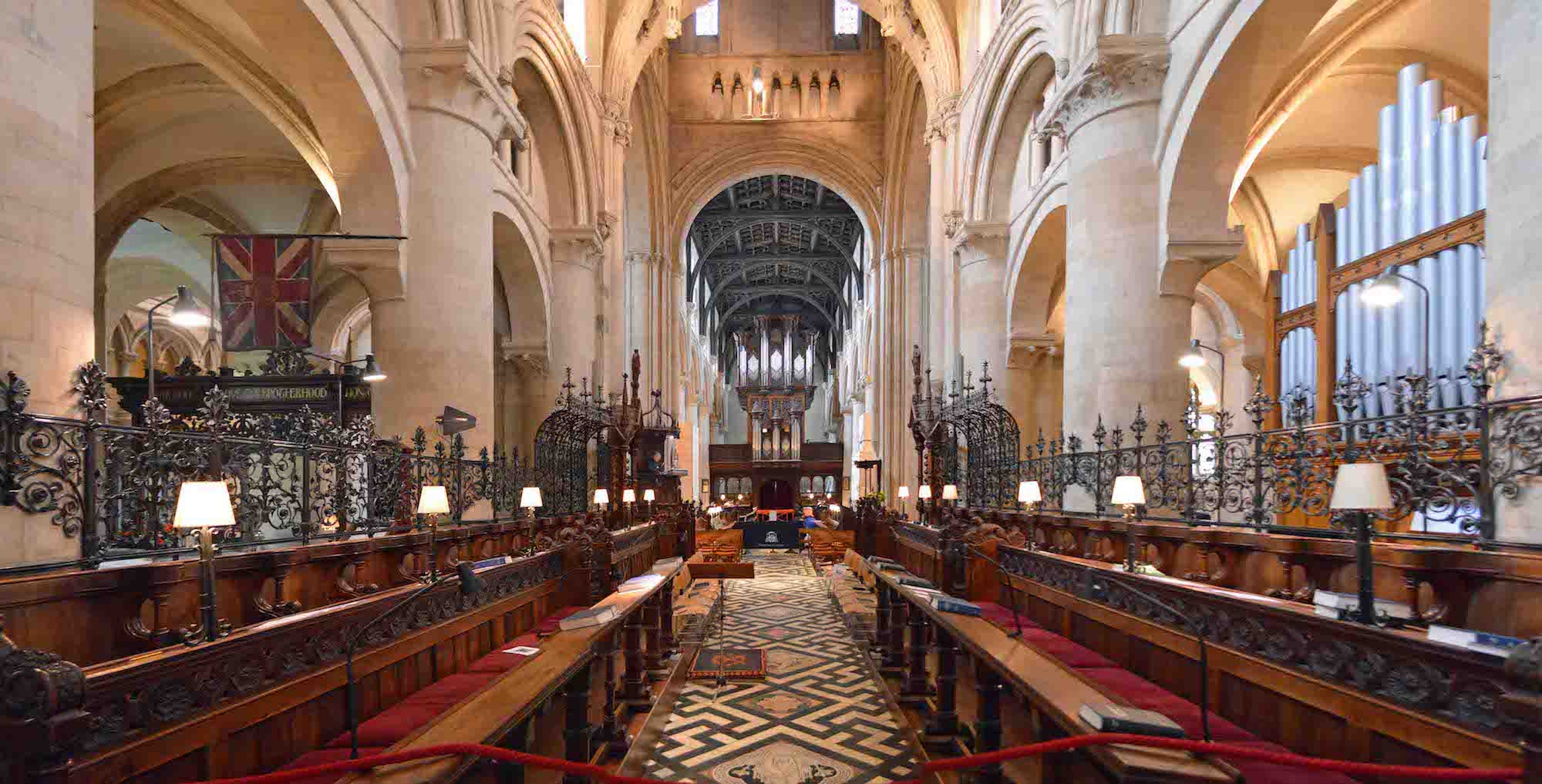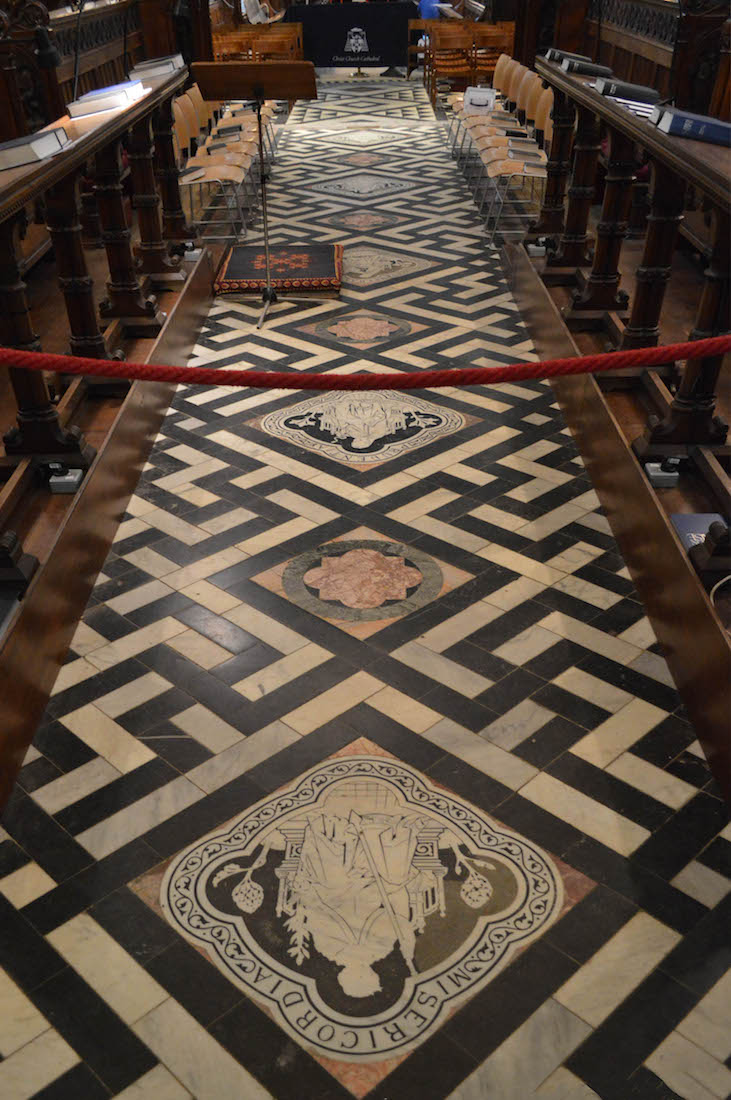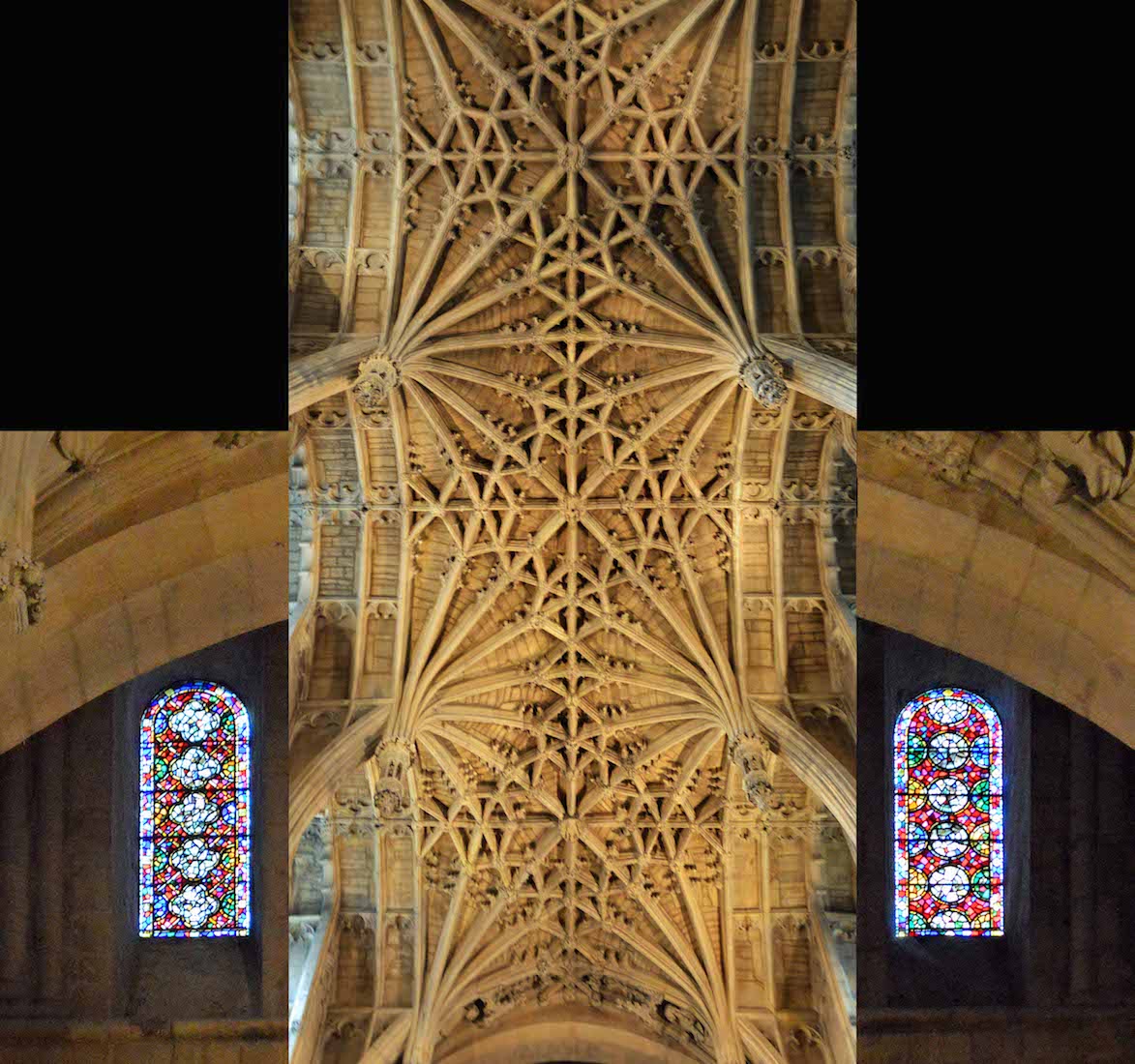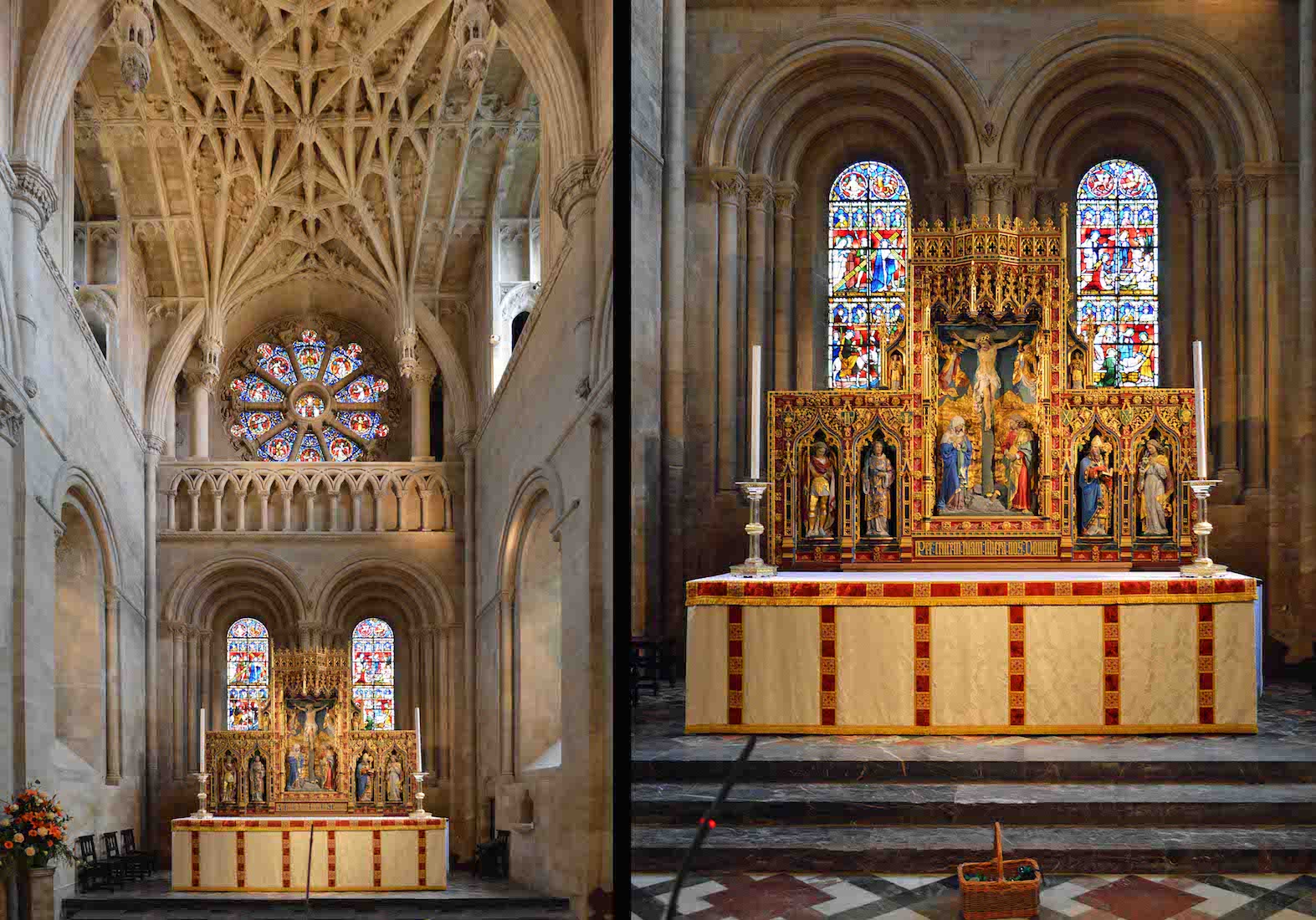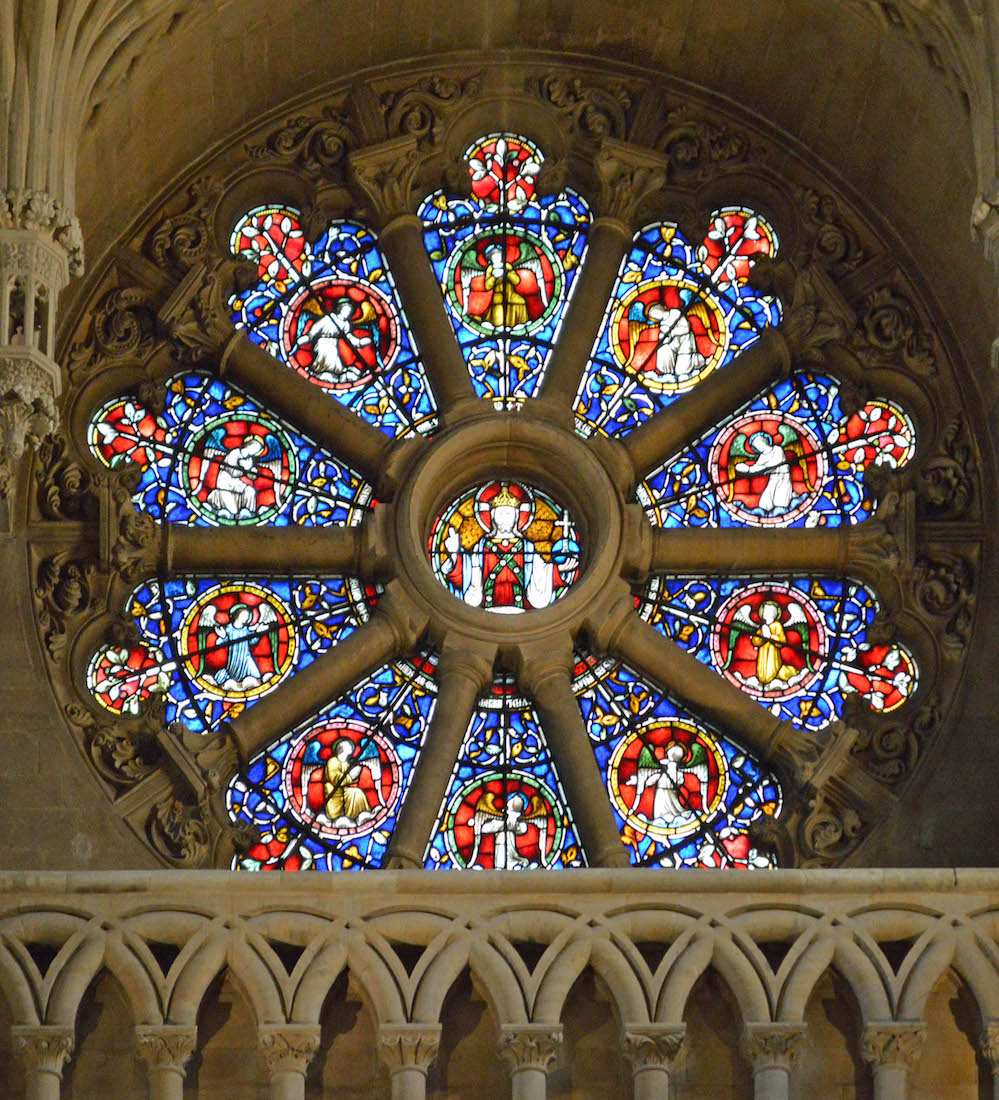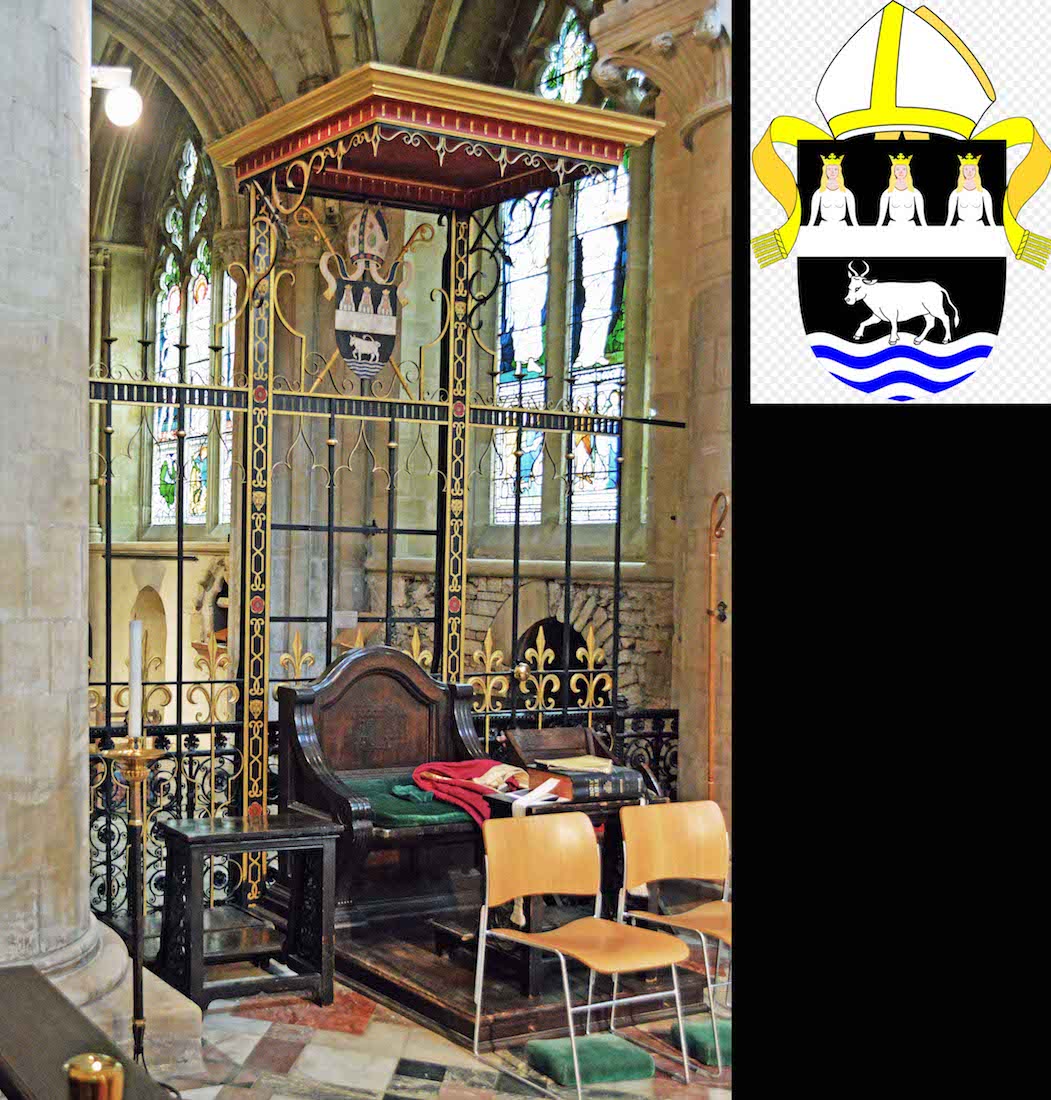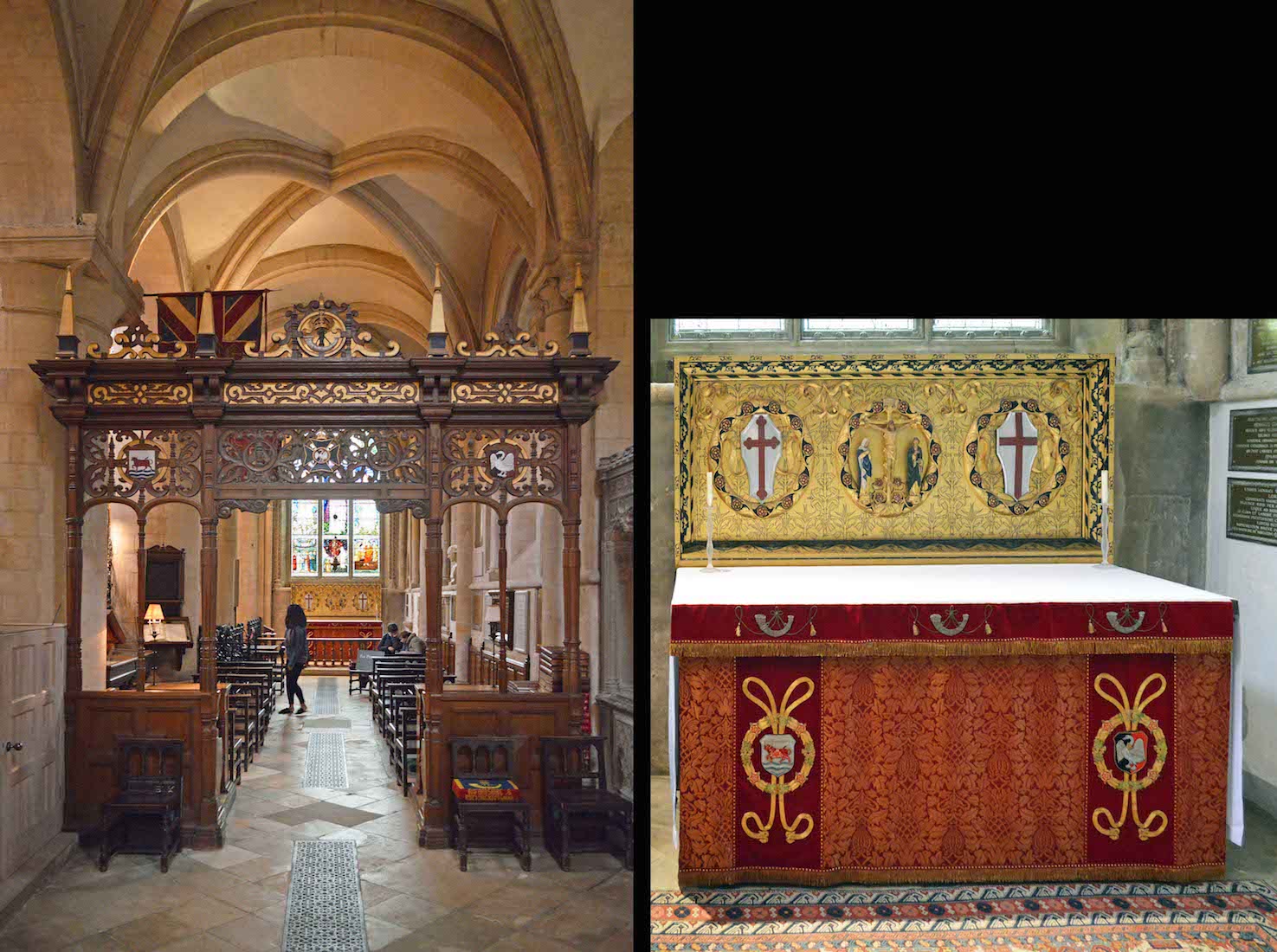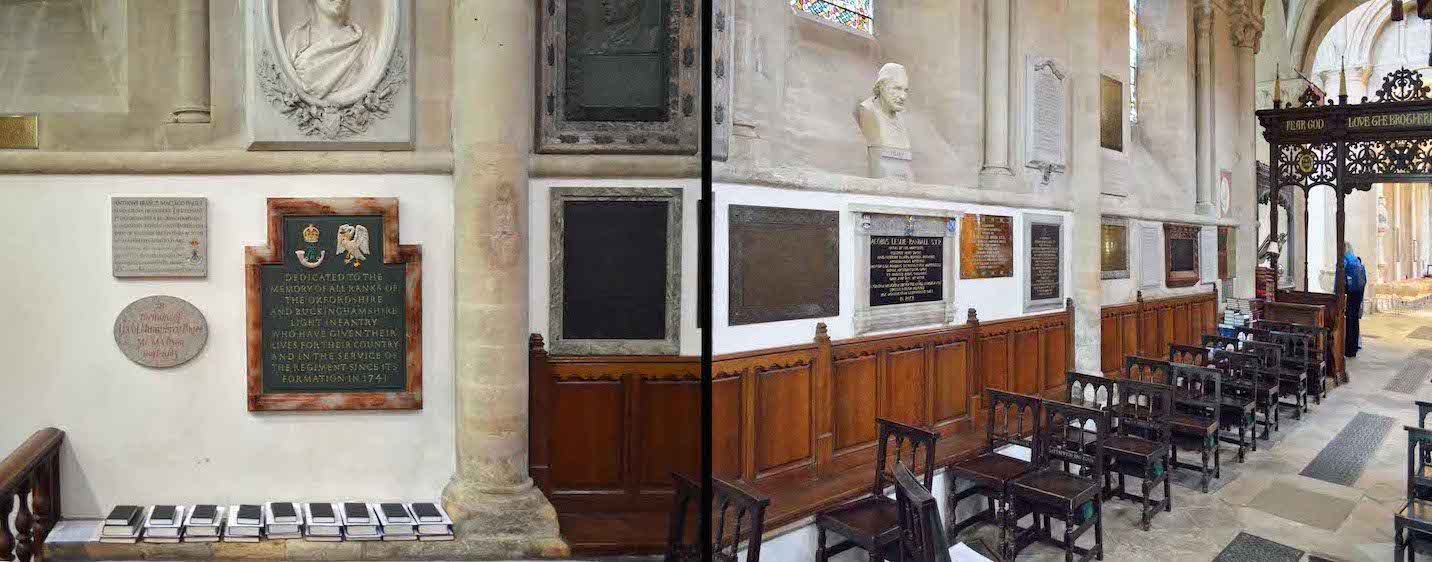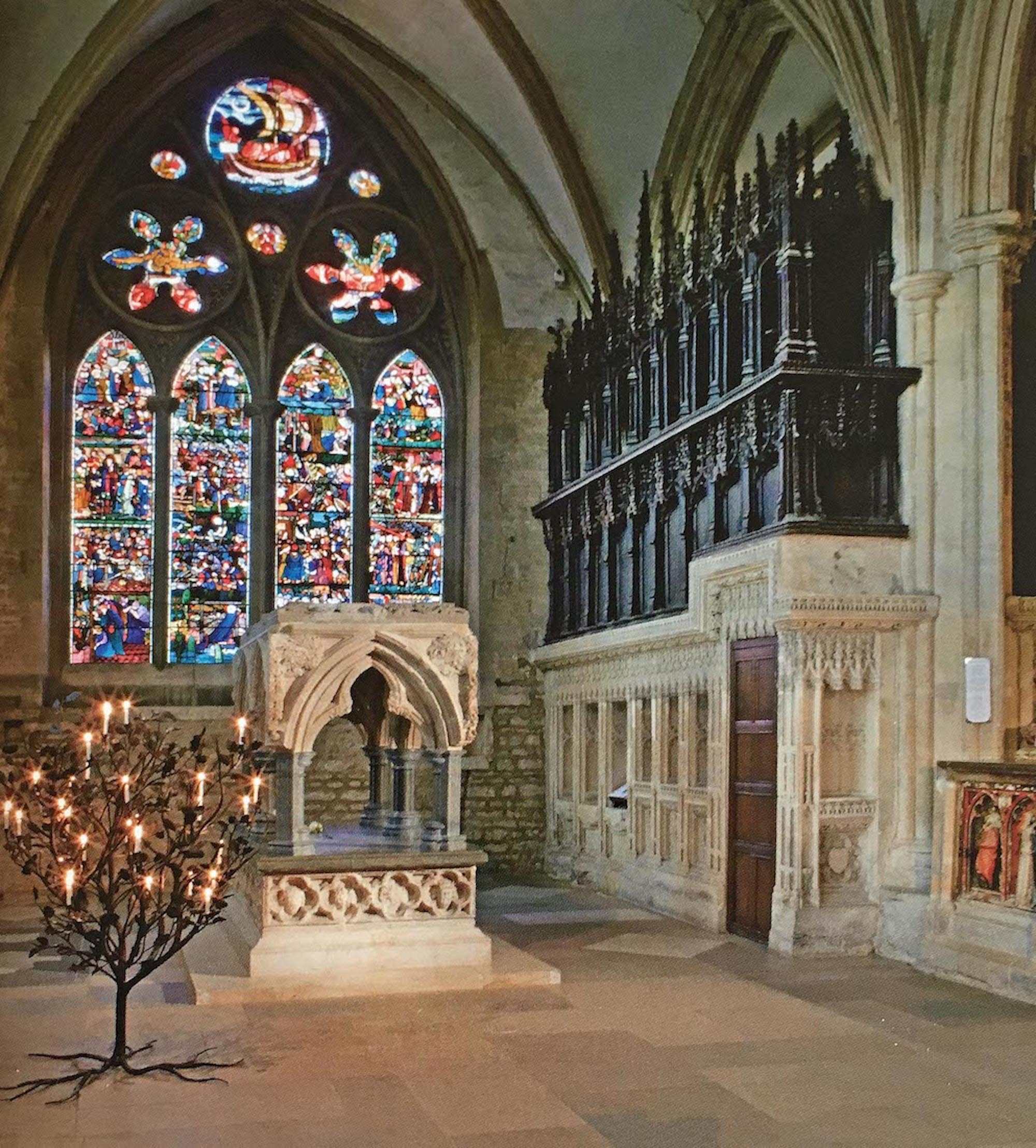
The large structure in the front corner of the Latin Chapel is a watching loft. As pilgrims made their way to the shrine, the watching loft was the place that ultimately safeguarded the shrine. It was constantly occupied in prayerful vigil. As pilgrims approached the shrine, they could be observed from a height, prayed for and offered to God. [Cathedral Photo] PLAN
22. LADY MONTACUTE TOMB
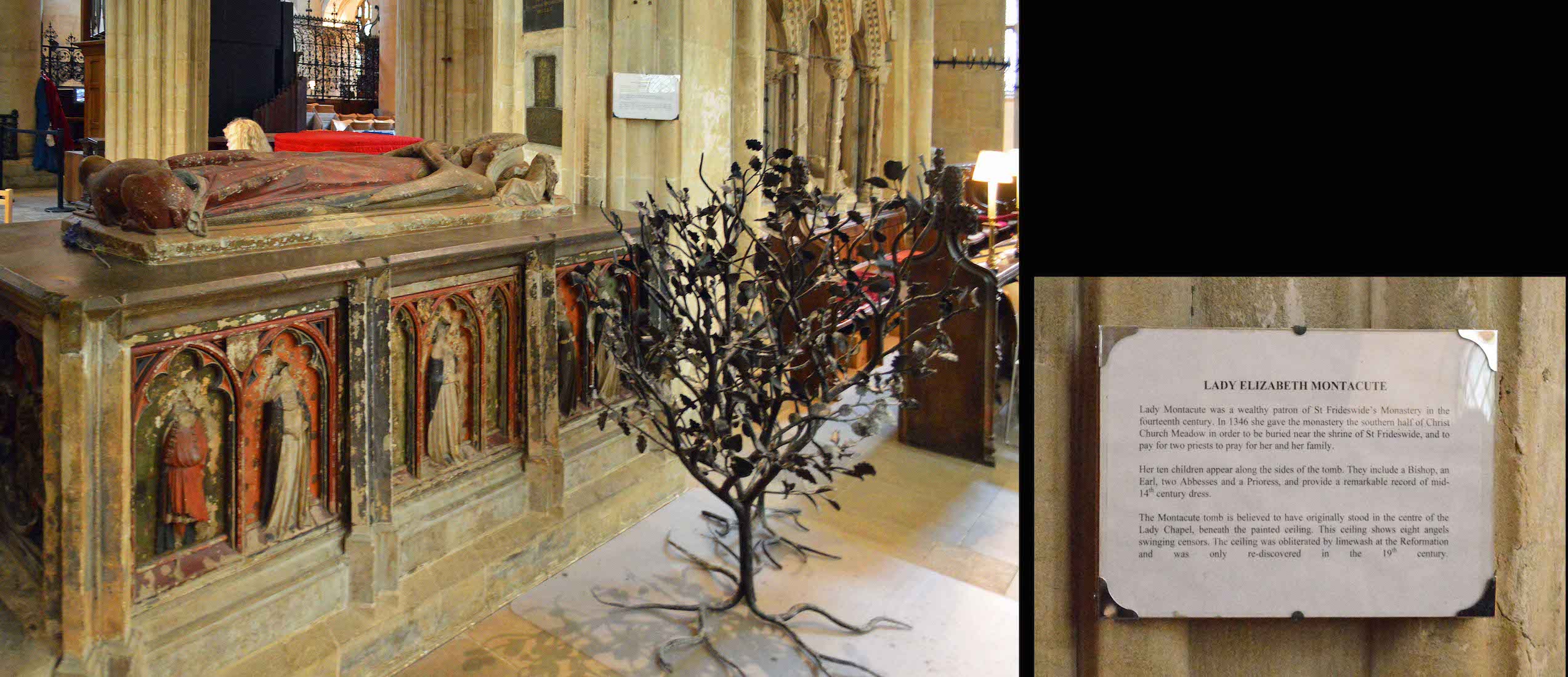
Lady Elizabeth Montacute was a major benefactor of Saint Frideswide’s Church, now called Christ Church, which is the Cathedral of Oxford University. Her tomb now lies between the Latin Chapel, whose construction she funded, and the Lady Chapel (was the Dean’s Chapel), where she was originally buried under its magnificent painted ceiling (now faded by time).
23. LATIN CHAPEL EFFIGY
Another effigy lies nearby. It belongs to an Augustinian Canon, Prior Alexander Sutton.
24. LATIN CHAPEL COLUMN AND STONE
There is yet another effigy before we come to this column with a stone at its base. The stone remnant remembers Ela, Countess of Warwick who died 6th February 1297, and was buried at Osney Priory. We come around this column to enter back into the Lady Chapel.
25. ROUND TO THE LADY CHAPEL; KNIGHT EFFIGY
The effigy next to the column is that of a knight – Sir John de Nowers (? – 1386). He was a huge man for his day, measuring two metres tall. His coat of arms (three wheat sheaves) appear on his surcoat. His head rests on a tilting helm and crest in the shape of an ox, and at his feet lies a collared dog. There are two memorials on the nearby column: the lower one remembers Georgius Croydon LL:D. The top one is in memory of Robert Burton, author of ‘The Anatomy of Melancholy’, a 17th century treatise on depression and still one of the greatest books in the history of medicine.
26. LADY CHAPEL
We come to the Lady Chapel. Not ornate like some, but with bold features. The other side of the watching loft at left, large tomb slabs on the floor, an expansive coloured window behind the altar. In contrast the pedestal altar is small, as is the corner statue of Mary and Jesus. PLAN
27. LADY CHAPEL ALTAR AND WATCHING LOFT
In fact there is little here to suggest that this is the Lady Chapel, unless perhaps the window ... ?
28. LADY CHAPEL WINDOW
But no, this stained glass window by Edward Burne-Jones is called the Vymer Memorial Window, being in memory of a former undergraduate member of the College called Frederic Vymer who was murdered in Greece in 1870. The main figures are all male: the prophet Samuel, King David, St John the Evangelist and St Timothy.
29. PAST A MEMORIAL ON THE WAY TO THE BELL CHAPEL
We leave the Lady Chapel and walk around this column to the adjacent Bell Chapel. The column memorial is for William Goodwin (died 1620), who was an English churchman and academic, Dean of Christ Church from 1611. He was a scholar of Westminster School, and was elected in 1573 to Christ Church. In 1590 he is mentioned as sub-almoner to Queen Elizabeth, and prebendary of York.
30. VIEW ACROSS THE NORTH TRANSEPT
As we turn here we can see back across the North transept: a collection of grand pianos! Of particular interest though is the memorial slab tombstone remembering St Frideswide.
31. THE BELL CHAPEL
This Chapel was named after George Bell who was a member of this College. Bell was Bishop of Chichester, England. He was very involved in ecumenism, or bringing different churches together, playing a big role in the early World Council of Churches. He also was a key player in the world’s knowledge and reaction to what was happening in Nazi Germany. In a radio broadcast to the German nation after the war he said: ‘No nation, no church, no individual is guiltless. Without repentance and without forgiveness, there can be no regeneration.’ These words are carved into the floor by the altar. [Left: Cathedral Photo] PLAN
32. THE LADY CHAPEL AND BELL CHAPEL WINDOWS
This view shows the two adjacent windows by Edward Burne-Jones in the Lady Chapel and Bell Chapel. The Bell Chapel window shows three musical figures: St Cecelia in the middle, and an angel on either side.
33. CHANCEL AND NAVE TO THE WEST
Leaving the Bell Chapel we now enter the centre of the Cathedral – the nave, chancel and high altar. Looking West from here we see past the choir stalls and the distant nave seating to the Cathedral organ. The pulpit is just visible at left – with a preacher! For future reference, notice the two high clerestory windows. PLAN
34. CHANCEL TILING
There is special floor tiling through the chancel. A good policy when visiting cathedrals is to look up and to look down.
35. CHANCEL VAULTING AND CLERESTORY WINDOWS
There is beautiful vaulting over the chancel – considered to be one of the best examples of its type in any English cathedral. Built in 1500 by the Oxford master mason William Orchard, its beautiful ribs splay out from twelve stone lanterns which appear to hang miraculously in mid-air. In the centre of the vault, small interconnecting lierne ribs create eight-pointed stars, forming an image of heaven above the Cathedral. Here the photo is superimposed over a view of the two colourful clerestory windows. These have abstract design, and look to be composed of rescued pieces of coloured glass.
36. HIGH ALTAR
Turning the other way, we face the sanctuary, the most sacred part of the Cathedral, housing the main altar where the congregation meets to share bread and wine in obedience to the words of Jesus at the Last Supper. Behind the altar is the beautifully carved reredos designed by G.F. Bodley in 1881, showing Christ on the cross and a series of Christian saints. From left to right they are: St Michael, St Stephen, the Virigin Mary, St John, St Augustine of Hippo, and St Gabriel. The wall behind is also Victorian: the work of Gilbert Scott.
37. ROSE WINDOW
The large rose window above the altar has 10-fold symmetry. It shows Christ at the centre, surrounded by worshipping angels.
38. CATHEDRA
To the left of the high altar is the Bishop’s throne. The Latin term for this is ‘cathedra’ and it is from this that the Cathedral takes its name. Oxford was part of the Diocese of Lincoln until 1542 when Henry VIII created a Bishop of Oxford. The joint foundation of Cathedral and College took place in 1546, with the naming of Christ College. The coat of arms for the Oxford Diocese shows an ox, and probably St. Frideswide and her two patron saints, Cecilia and Catherine.
39. CHAPEL OF REMEMBRANCE
On the South side of the central chancel we find this Chapel of Remembrance. It was set up in 1931 for the local army regiment: the Oxfordshire and Buckinghamshire Light Infantry. The ornate reredos has a crucifixion theme, and the altar frontal displays the coats of arms of Oxfordshire and Buckinghamshire. PLAN
40. CHAPEL SOUTH WALL
On the South wall of the chapel, various memorials and plaques are displayed, including a dedication to members of the Regiment in memory of their sacrifice. We catch a glimpse of one of the three stained glass windows higher on this wall.


